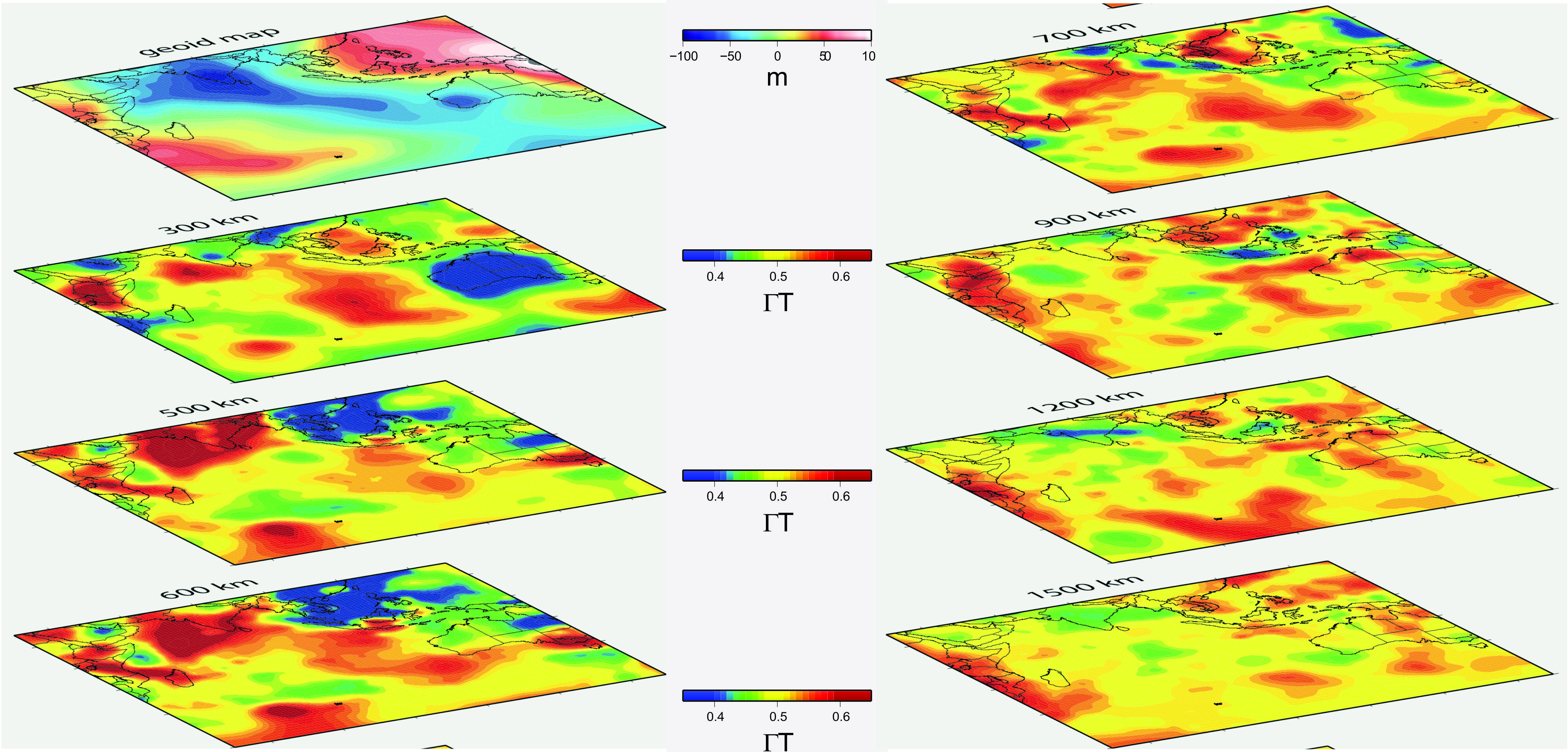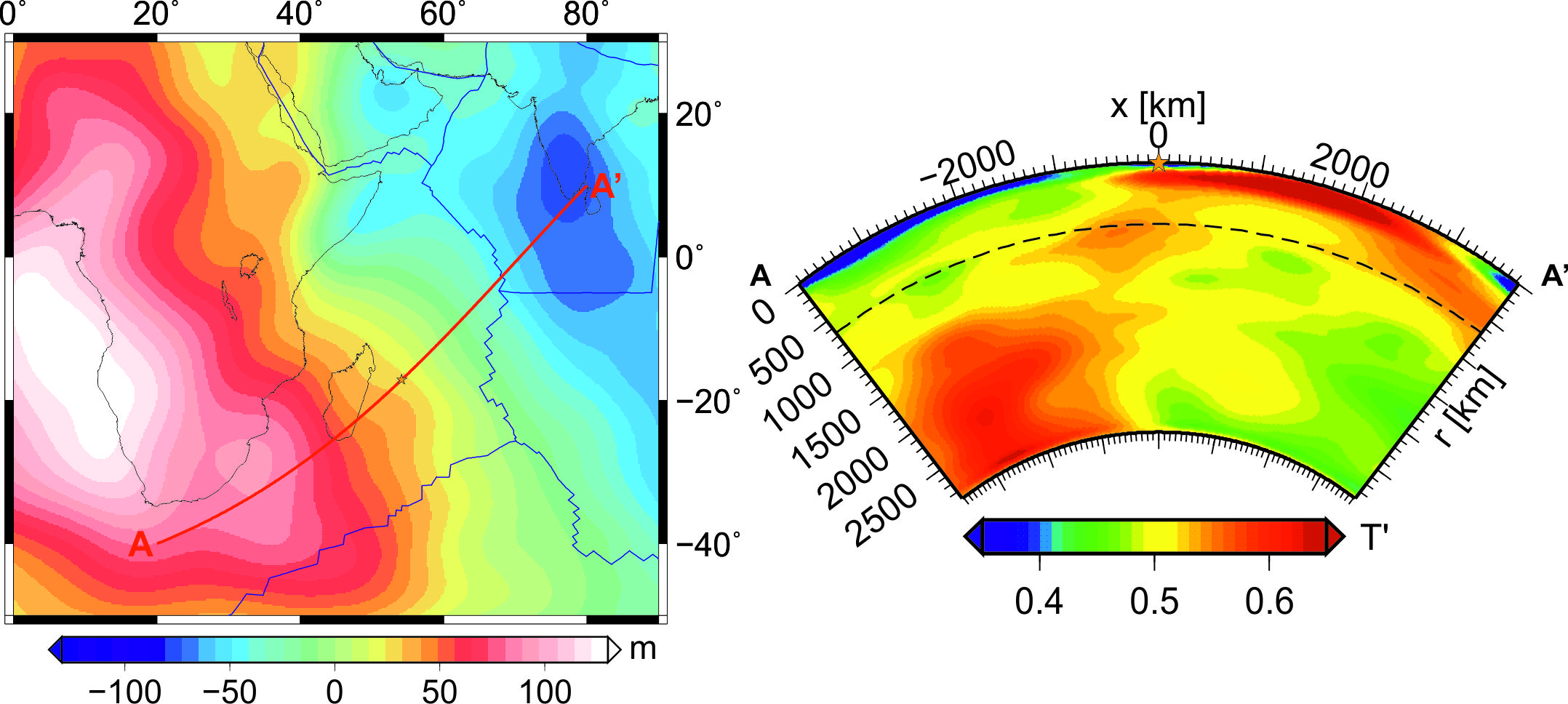Scientists find out the cause for geoid low in the Indian Ocean
 Did it ever occur to you that the seemingly still Earth beneath your feet has its own share of turbulence and violent movements? While we know quite a few things about the Earth’s surface, or the crust, its interior is still a mystery. We have launched spacecrafts to explore the outer reaches of the galaxy, but we haven’t yet designed probes that go up to even the base of the crust, a mere 35 kms deep. Hence, the only way to learn what’s going on deep inside our planet, its core and the mantle, is by indirect methods.
Did it ever occur to you that the seemingly still Earth beneath your feet has its own share of turbulence and violent movements? While we know quite a few things about the Earth’s surface, or the crust, its interior is still a mystery. We have launched spacecrafts to explore the outer reaches of the galaxy, but we haven’t yet designed probes that go up to even the base of the crust, a mere 35 kms deep. Hence, the only way to learn what’s going on deep inside our planet, its core and the mantle, is by indirect methods.
Before we go deep down, have you noticed how our planet actually looks? Though it apparently looks like a uniform blue sphere, the Earth is actually like a potato with its own share of deformations. This uneven surface results from non-uniform gravity because of the unequal distribution of matter within the planet’s interior. In addition, the movement of tectonic plates occasionally create mountains and valleys on the surface of the Earth, adding to the deformations. Since the oceans cover 71% of the planet’s surface, these deformities affect the shape of the oceans too.
 But how? If there were no tides and currents on the oceans, all the water in the oceans would settle onto a smoothly undulating shape called a geoid, rising wherever there is high gravity, and sinking where gravity is low. The resulting unevenness in the ocean surface, known as “geoid anomalies”, are generated by uneven mass distribution within the deep Earth.
But how? If there were no tides and currents on the oceans, all the water in the oceans would settle onto a smoothly undulating shape called a geoid, rising wherever there is high gravity, and sinking where gravity is low. The resulting unevenness in the ocean surface, known as “geoid anomalies”, are generated by uneven mass distribution within the deep Earth.

Modeled geoid (left) and temperature variations (right) along profile AA. A hot plume like structure can be seen rising from the core-mantle boundary, extending till ∼ 1000 km depth and getting deflected to the east in the direction of the geoid low.
One such anomaly is found just south of Sri Lanka, spanning a vast extent. Known as the Indian Ocean Geoid Low (IOGL), it is dominated by a significant gravity low where the ocean surface plunges down to 106 metres. “The existence of the Indian Ocean geoid low is one of the most outstanding problems in Earth Sciences. It is the lowest geoid/gravity anomaly on Earth and so far no consensus existed regarding its source” says Prof. Attreyee Ghosh, an Assistant Professor at the Centre for Earth Sciences, Indian Institute of Science, Bangalore.
In a recent study published in the journal of Geophysical Research Letters, Prof. Ghosh and her colleagues, in collaboration with researchers from the GFZ German Research Centre for Geosciences, Germany, have pondered on the reasons behind the missing mass that is causing the geoid low. Though several studies in the past have tried to answer this, most of them attributing it to a remnant of an earlier plate that dived into the Earth’s mantle beneath another plate millions of years ago, there had been no convincing explanation of the source until now.
In this study, the researchers employ numerical models of ‘mantle convection’ to explain the mass deficit. Mantle convection is a type of movement caused within the Earth’s mantle or the middle layer, where hotter and lighter material rise to the top, and cooler and denser material sink due to gravity. This convective movement within the mantle was driven by seismic tomography models that use seismic waves to obtain a 3-dimensional picture of the Earth’s interior.
The researchers found that ‘low density anomalies’ or the presence of lighter materials in the upper to mid mantle below the IOGL, were responsible for the gravity low in this region. Mantle plumes or the rising up of abnormally hot rock within the Earth’s mantle can result in low density anomalies. However, no known mantle plume exists beneath the IOGL, ruling out this theory. However, they found that there was hot material rising from the African large low-shear-velocity province (LLSVP) or the African superplume, in the neighbourhood of the IOGL, that was getting deflected eastward and terminating beneath the IOGL. The deflection is possibly due to the fast motion of the Indian plate, argue the researchers.
“A geoid low or a negative geoid anomaly would be caused by a mass deficit within the deep mantle. Our study explains this low with hotter, lighter material stretching from a depth of 300 km up to ~900 km in the northern Indian Ocean, most likely stemming from the African superplume”, says Prof Ghosh.
This study is definitely a breakthrough in convincingly explaining the occurrence of the Indian Ocean Geoid Low using a model driven by present day density anomalies. Most existing theories have tried to explain this negative anomaly with the help of cold, dense oceanic plates that sank into the mantle in the past. As part of future work, the researchers would like to investigate the evolution of the geoid low from the past to the present using time dependent mantle convection models.
References:
A. Ghosh, G. Thyagarajulu, B. Steinberger, The importance of upper mantle heterogeneity in generating the Indian Ocean geoid low, Geophysical Research Letters, 44, doi: 10.1002/2017GL075392, 2017.
S. Singh, S. Agrawal, A. Ghosh, Understanding deep earth dynamics: a numerical modelling approach, Current Science (Invited Review), 112, p. 1463-1473, 2017.
A. Ghosh, W. E. Holt, Plate Motions and Stresses from Global Dynamic Models, Science, 335, p. 839-843, 2012.
website URL: http://ceas.iisc.ac.in/~aghosh
Story by : Spoorthy Raman
Other Featured research




 Did it ever occur to you that the seemingly still Earth beneath your feet has its own share of turbulence and violent movements? While we know quite a few things about the Earth’s surface, or the crust, its interior is still a mystery. We have launched spacecrafts to explore the outer reaches of the galaxy, but we haven’t yet designed probes that go up to even the base of the crust, a mere 35 kms deep. Hence, the only way to learn what’s going on deep inside our planet, its core and the mantle, is by indirect methods.
Did it ever occur to you that the seemingly still Earth beneath your feet has its own share of turbulence and violent movements? While we know quite a few things about the Earth’s surface, or the crust, its interior is still a mystery. We have launched spacecrafts to explore the outer reaches of the galaxy, but we haven’t yet designed probes that go up to even the base of the crust, a mere 35 kms deep. Hence, the only way to learn what’s going on deep inside our planet, its core and the mantle, is by indirect methods. But how? If there were no tides and currents on the oceans, all the water in the oceans would settle onto a smoothly undulating shape called a geoid, rising wherever there is high gravity, and sinking where gravity is low. The resulting unevenness in the ocean surface, known as “geoid anomalies”, are generated by uneven mass distribution within the deep Earth.
But how? If there were no tides and currents on the oceans, all the water in the oceans would settle onto a smoothly undulating shape called a geoid, rising wherever there is high gravity, and sinking where gravity is low. The resulting unevenness in the ocean surface, known as “geoid anomalies”, are generated by uneven mass distribution within the deep Earth.